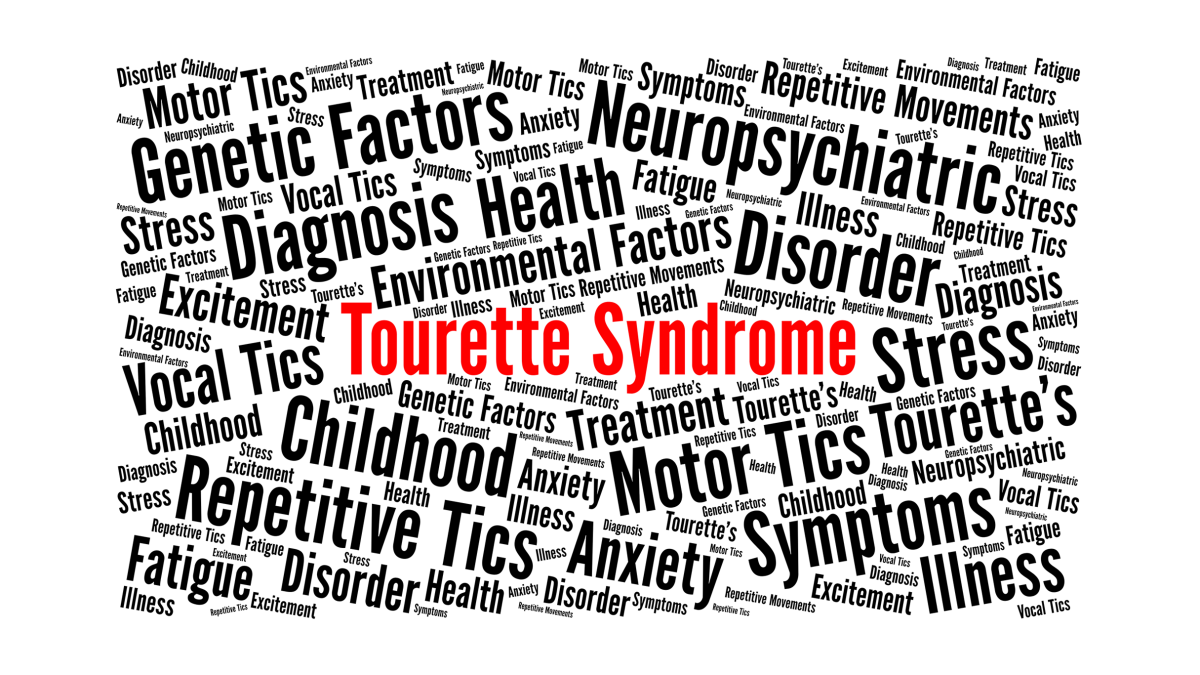Tourette Syndrome: A Look at Today’s Best Treatments

- Share via
Key Facts
- Tourette syndrome is diagnosed when both motor and vocal tics persist for more than one year before age 18.
- CBIT is the first-line behavioral therapy and is effective in both in-person and virtual formats.
- Clonidine and guanfacine are preferred for children with TS and co-occurring ADHD due to their safety.
- Antipsychotics like aripiprazole and pimozide are used when symptoms are severe or unresponsive to first-line treatments.
- Deep Brain Stimulation is an option for rare, treatment-resistant cases and has shown promise in select patients.
Tourette syndrome (TS) is more than just a childhood phase of twitching or making sounds—it’s a chronic neurodevelopmental condition that can disrupt daily functioning and emotional well-being. Characterized by both motor and vocal tics that begin before age 18 and last for more than a year, Tourette’s often brings along other challenges like ADHD, obsessive-compulsive disorder (OCD), and anxiety. While some kids see symptoms lessen as they age, others need long-term, individualized treatment plans to manage both the tics and associated psychiatric conditions.
Table of Contents
- What Is Tourette Syndrome?
- First-Line Interventions: Behavioral Therapy and Alpha-2 Agonists
- Pharmacological Treatment: When Tics Get Worse
- Advanced and Adjunctive Therapies
- Key Clinical Considerations
- Closing Thoughts
- References
What Is Tourette Syndrome?
Tourette syndrome is diagnosed when an individual has at least two motor tics and one vocal tic for more than 12 months, with onset before age 18 [1]. These tics are sudden, repetitive, and involuntary—for example, blinking, throat clearing, or shoulder shrugging. A helpful diagnostic clue is that people with TS can often suppress their tics briefly, unlike those with habit cough or psychogenic cough [1].
Differentiating TS from other movement or psychiatric disorders is key, especially since tics can wax and wane in intensity. That fluctuation, combined with the ability to voluntarily hold back tics for short periods, helps set Tourette’s apart from conditions like dystonia or chorea.
First-Line Interventions: Behavioral Therapy and Alpha-2 Agonists
Comprehensive Behavioral Intervention for Tics (CBIT)
Behavioral therapy is the foundation of TS treatment, and CBIT is the gold standard. This structured approach combines habit reversal training with relaxation techniques and functional intervention strategies. CBIT helps individuals recognize premonitory urges—the sensations that precede tics—and teaches them to respond with competing behaviors that prevent the tic.
CBIT has been shown to be effective across different delivery formats. A 2024 review found it worked in both in-person and telehealth settings—even when ADHD or OCD were present [4]. In fact, recent studies show that tele-CBIT sessions are almost as effective as in-office visits [5], making it a convenient option for families with busy schedules or living far from specialists.
Alpha-2 Adrenergic Agonists
Medications like clonidine and guanfacine are often used for kids with mild to moderate tics—especially when ADHD is also present. These medications work on the brain’s norepinephrine pathways to reduce hyperactivity and impulsivity which in turn can reduce tic severity.
Their appeal is their safety profile. Compared to antipsychotics, alpha-2 agonists are less likely to cause serious side effects, making them a good starting point for young patients [2] [3].
Pharmacological Treatment: When Tics Get Worse
When behavioral therapy and alpha-agonists don’t work, antipsychotic medications may be added. These drugs target dopamine pathways—known to be involved in tic generation—but come with trade-offs.
Aripiprazole and risperidone are commonly prescribed because they are better tolerated than older drugs like haloperidol. Meanwhile pimozide, a dopamine receptor blocker, has shown better outcomes than haloperidol in clinical trials [1].
For individuals with focal tics—like persistent eye blinking or neck movements—botulinum toxin injections can provide targeted relief by weakening overactive muscles [6].
Monitoring and Side Effects
Despite their effectiveness, antipsychotics require close monitoring. Side effects like sedation, weight gain, and movement disorders (e.g., tardive dyskinesia) can emerge especially with long-term use. Clinicians must weigh the benefits of symptom relief against the risk of side effects and adjust treatment accordingly [3].

Advanced and Adjunctive Therapies
For the small percentage of individuals with treatment-refractory TS, Deep Brain Stimulation (DBS) may be considered. DBS involves surgically implanting electrodes into specific brain regions to modulate abnormal activity. While still relatively rare and not standard care, DBS has shown promising results in reducing severe tics in select patients [6].
Beyond medical interventions, holistic care is key. Support groups, patient education and school-based accommodations—like extended test times or breaks during class—can make a big difference in a child’s social and academic success.
Key Clinical Considerations
TS isn’t just about the tics—it’s about the whole person. Comorbidities like OCD, ADHD, and anxiety often impact daily life more than the tics themselves. So treatment plans must be individualized and medication choices should consider these overlapping conditions [2].
Clinicians must also distinguish tics from other movement disorders. Features like premonitory urges, voluntary suppression and the episodic nature of tics can help differentiate TS from other hyperkinetic disorders [1].
Closing Thoughts
Tourette syndrome may be lifelong but it doesn’t have to be life defining. With the right combination of behavioral therapy, medication, support and education most people can manage their symptoms and live well. As research advances—especially in digital therapy delivery and neuromodulation—there’s more hope for more personalized, accessible and effective treatments for people with TS.
References
[1] Irwin, R. S., Glomb, W. B., & Chang, A. B. (2006). Habit cough, tic cough, and psychogenic cough in adult and pediatric populations: ACCP evidence-based clinical practice guidelines. Chest, 129(1 Suppl), 174S–179S. https://doi.org/10.1378/chest.129.1_suppl.174S
[2] Egolf, A., & Coffey, B. J. (2014). Current pharmacotherapeutic approaches for the treatment of Tourette syndrome. Drugs of today (Barcelona, Spain : 1998), 50(2), 159–179. https://doi.org/10.1358/dot.2014.50.2.2097801
[3] Whittington, C., Pennant, M., Kendall, T., Glazebrook, C., Trayner, P., Groom, M., Hedderly, T., Heyman, I., Jackson, G., Jackson, S., Murphy, T., Rickards, H., Robertson, M., Stern, J., & Hollis, C. (2016). Practitioner Review: Treatments for Tourette syndrome in children and young people - a systematic review. Journal of child psychology and psychiatry, and allied disciplines, 57(9), 988–1004. https://doi.org/10.1111/jcpp.12556
[4] Kohler, K., Rosen, N., & Piacentini, J. (2025). Description, Implementation, and Efficacy of the Comprehensive Behavioral Intervention for Tics as First-Line Treatment for Tourette and Other Tic Disorders. Journal of child and adolescent psychopharmacology, 35(3), 126–134. https://doi.org/10.1089/cap.2024.0023
[5] Morand-Beaulieu, S., Szejko, N., Fletcher, J., & Pringsheim, T. (2024). Behavioural Therapy for tic disorders: a comprehensive review of the literature. Expert review of neurotherapeutics, 24(12), 1181–1191. https://doi.org/10.1080/14737175.2024.2405740
[6] Billnitzer, A., & Jankovic, J. (2020). Current Management of Tics and Tourette Syndrome: Behavioral, Pharmacologic, and Surgical Treatments. Neurotherapeutics : the journal of the American Society for Experimental NeuroTherapeutics, 17(4), 1681–1693. https://doi.org/10.1007/s13311-020-00914-6












